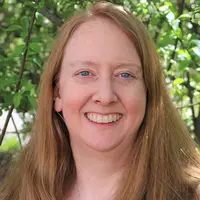
Moments in each day cause tightening in my chest when I think about family and friends who are essential health care workers, or who are not working due to COVID-19, or who have or will contract COVID-19.
Moments in each day I am calm as I receive the 42nd hug of the day from my husband, or I watch the neighborhood dogs frolic on the grassy area outside my window.
And then anxiety creeps back in when I think about: what next?
- What will it look like to “go back to work” (in an office that is, plenty of work happening at home)? Will Zoom coffee breaks continue? Will I need new clothes (that fit) for the next client meeting?
- What about the experience for older adults, especially for those who live alone? What will the world look like for them post-COVID-19?
For the over 70 million Americans age 60 and older, there is good news: In recent weeks Congress passed and the President signed into law two legislative initiatives to address the COVID-19 pandemic. Elements of these laws allow for increased funding for services that support older adults living in the community. Commonly referred to as “home and community-based services” (HCBS), these programs include home-delivered meals, transportation, and help with household tasks. Not surprisingly, older adults receiving these services often report having limitations in activities of daily living (ADLs; e.g., dressing, eating, using/getting to the toilet) or instrumental ADLs (e.g., cooking, laundry, managing finances). Someone receiving help with 2 or more ADLs is often considered eligible for placement in a nursing home.
We know HCBS are essential. Considering Medicaid waiver programs that provide HCBS—which covers 791,000 older adults and adults with physical disabilities—and Older Americans Act (OAA) programs that fund HCBS—which support 2.7 million adults age 60 —the rough total for those two programs is 3.4 million people using HCBS. But that 3.4 million is less than half of the nearly 8 million who potentially need them.
How were the other older adults getting by before COVID-19, how are the needs of the nearly 8 million being met during COVID-19, and what will happen when we “return to normal” after COVID-19?
Oh, a critical detail not mentioned earlier—of more than 70 million Americans age 60 and older, over a quarter of them live alone. And among women age 75 and older, 44 percent live alone (see 2018 Profile of Older Americans for more facts).
You may be thinking, “Living alone, that is good! They are less likely to contract COVID-19.” But… what if they need services or supports to continue to live alone? They need to have the technology and understanding to do a telehealth visit with their healthcare provider. They need to be extra vigilant on trips to the store or pharmacy or when someone (possibly a new someone each time) brings over a home-delivered meal. Maybe they were not receiving a home-delivered meal or “friendly visitor” before COVID-19, but the new funding is making it possible. And maybe they were living alone and beginning to decline physically and cognitively but no one saw it, until now… could it be dementia or diabetes?
A recent study I published with colleagues looked at whether having informal support was a mitigating factor in HCBS use among older adults. We were interested in better understanding the HCBS use of extremely vulnerable older adults (i.e., “fair” or “poor” self-reported health status and living below 200 percent of the federal poverty level). The results highlight a hard truth—especially at this time—older adults who live alone have roughly three times the likelihood of using any HCBS compared to those who do not live alone. Our findings suggest that HCBS help combat social isolation and loneliness in addition to meeting the health needs of vulnerable older adults. This reinforces that HCBS are essential.
So again, there is tightening in my chest as I wonder “what next?”
- What about those older adults who needed but did not receive services pre-COVID-19? Have they been identified, and are they now receiving the assessments, services, and supports they need to remain living in the community?
- What happens once this is over and the increased funds supporting HCBS for older adults are no longer available?
Our current situation is shining a light on the needs of some of our most vulnerable citizens. How can we assure that the needs of our older adults are not ignored when the crisis passes? Will we continue to check on neighbors, friends, and family? Make grocery store runs for people we have never spoken to? Will we remind our local, state, and federal leaders of the importance of giving people the right to live independently—even if it means they need a little support? Will our leaders continue to have the fight in them to advocate for the resources people need in order to stay in their communities?
The “what next?” is really a “what now?” as the issues outlined above are not new with COVID-19. They have just been highlighted. The question to us all is … “what now?”

